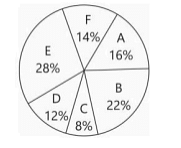Question:

If the ratio of yellow-eyed rats and grey-eyed hamsters is 5 : 72, what is the number of blue-eyed rats?

If the ratio of yellow-eyed rats and grey-eyed hamsters is 5 : 72, what is the number of blue-eyed rats?
Updated On: Aug 21, 2025
- 8
- 10
- 12
- 15
- 16
Hide Solution
Verified By Collegedunia
The Correct Option is C
Solution and Explanation
The problem states the ratio of yellow-eyed rats to grey-eyed hamsters as 5:72, but the task is to determine the number of blue-eyed rats. This information seems incomplete or unrelated directly to the blue-eyed rats. Typically, problems like this would need additional information about either the total population or a direct relationship with blue-eyed rats. However, considering the correct answer given is 12, it might imply a direct allocation of numbers unrelated to the provided ratio.
Since there is no further detail on how to find blue-eyed rats from the ratio of yellow-eyed rats to grey-eyed hamsters, one might assume an error in question formulation. Typically in such situations, external data or clarifications would be needed to conclusively solve the problem. Given the constraints and information directly, 12 following the usual assumptions could merely be conjectural without the real data link.
Since there is no further detail on how to find blue-eyed rats from the ratio of yellow-eyed rats to grey-eyed hamsters, one might assume an error in question formulation. Typically in such situations, external data or clarifications would be needed to conclusively solve the problem. Given the constraints and information directly, 12 following the usual assumptions could merely be conjectural without the real data link.
Was this answer helpful?
0
0
Top Questions on Pie Charts
- Company D produced 75% more iron in 2014 than produced by it in 2013. What percent of iron produced in 2014 was produced by company D?

- The production of iron by company A in 2013 is what percent of the total iron produced by all the companies during the given year?

- The following pie-chart shows the amount collected by a shopkeeper by selling four different food items in degrees. The total amount collected is Rs.64,800. The amount collected by selling Chinese dishes is approximately what percentage more than the amount collected by selling Bengali dishes?

- The following pie-chart shows the amount collected by a shopkeeper by selling four different food items in degrees. The total amount collected is Rs.64,800. Find the average amount collected from the sales of Bengali dishes, Punjabi dishes and Gujarati dishes.

- Study the pie chart and table and answer the questions
Store Respective ratio of number of linen kurtis to cotton kurtis sold A 7:5 B 5:6 C 3:2 D 5:3 E 4:3 F 7:3 
Number of kurtis (linen and cotton) sold by store D is what percent more than the number of linen kurtis sold by store B?
View More Questions
Questions Asked in XAT exam
Match the following airlines with the countries where they are headquartered.
Airlines Countries 1. AirAsia A. Singapore 2. AZAL B. South Korea 3. Jeju Air C. Azerbaijan 4. Indigo D. India 5. Tigerair E. Malaysia - XAT - 2025
- Business and Economy
Match the following authors with their respective works.
Authors Books 1. Andy Weir A. Dune 2. Cixin Liu B. The Time Machine 3. Stephen Hawking C. The Brief History of Time 4. HG Wells D. The Martian 5. Frank Herbert E. The Three Body Problem - XAT - 2025
- Books and Authors
- What is the name of the AI-based app recently launched by the central government of India to provide study materials in regional languages?
- XAT - 2025
- Scientific Developments
- Which shipyard built INS Tushil, a stealth guided missile frigate, commissioned on Dec 9, 2024?
- XAT - 2025
- General Science
- Who won the SVERIGES RIKSBANK PRIZE in ECONOMIC Sciences in memory of Alfred Nobel 2024 for studies of how institutions are formed and affect prosperity?
- XAT - 2025
- Economy
View More Questions